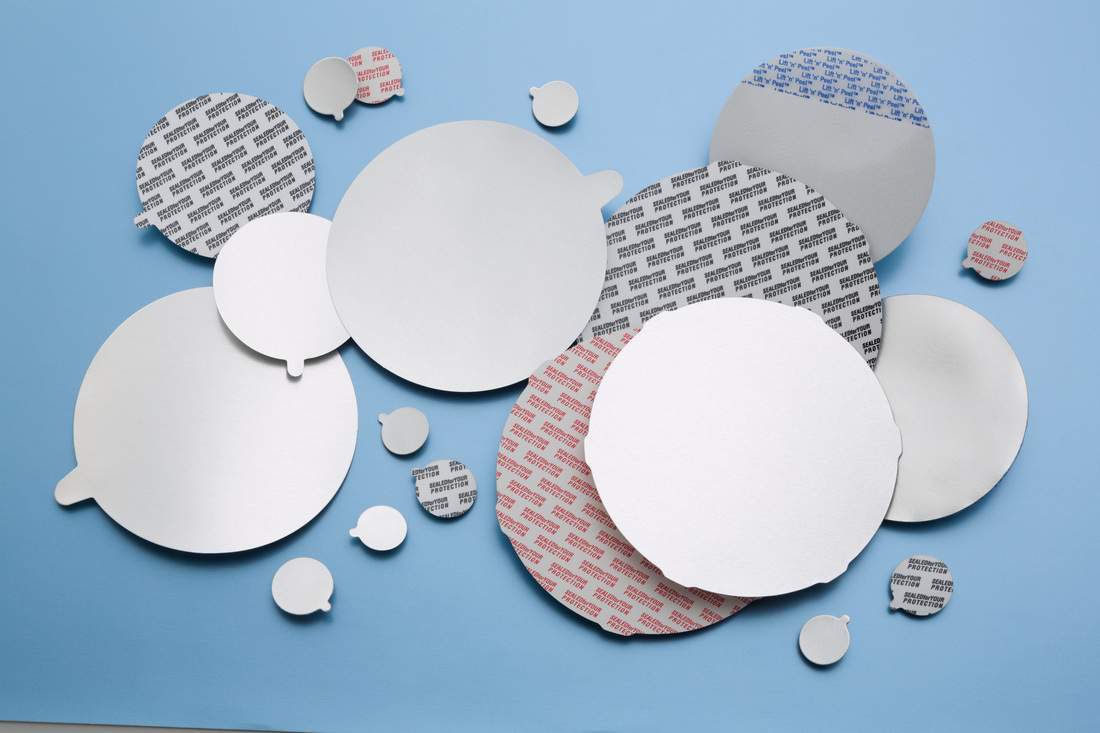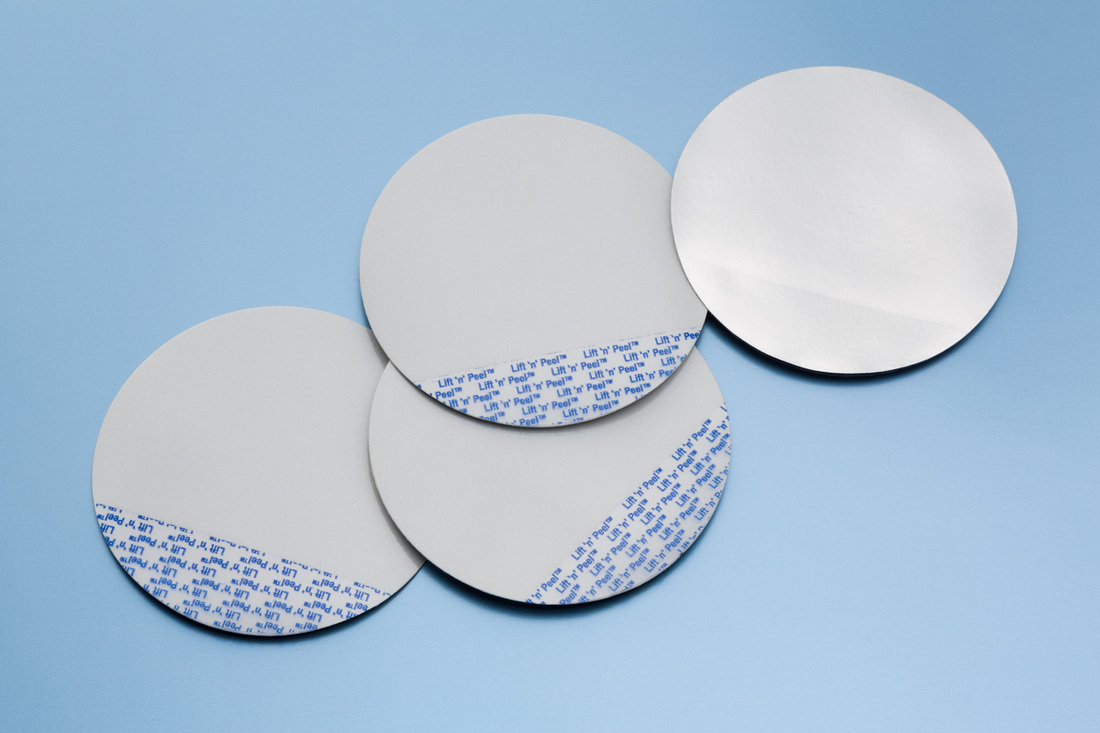m.f.i. capliner TYPEs
THERE ARE THREE BASIC TYPES OF CAPLINERS:
FOAM
Most foam liners are white, .030" thick, and non-printed. (Other thicknesses are available.) They're made of a three-ply, co-extruded material. This consists of a low-density polyethylene core sandwiched between two solid layers of low-density polyethylene.
This type of liner does not adhere to the landing of the jar. It creates a seal by compressing the foam between the cap and the landing of the jar. PRESSURE SENSITIVE
A pressure sensitive foam liner has an adhesive on one side that will stick to the landing of the container. The adhesive is activated by the torque created when screwing the cap tightly on to the landing of the jar.
This prevents the adhesive from interfering with handling the liners prior to insertion in the cap. It also provides a tamper-evident seal as the liner can not be reapplied after removal. This type of liner is normally printed on the non-adhesive side "Sealed For Your Protection". The imprint also helps to distinguish between the adhesive and non-adhesive side during insertion. It can be printed in black or red ink. Black is the most common color. heat induction
Heat induction liners are made of a clear polymer adhesive layer laminated to a foil. A backing material of either foam or pulp is adhered to the primary foil in one of two ways.
A two-piece wax bond allows the backing material (usually pulp) to remain in the cap as a secondary liner after the cap has been removed for the first time. One piece adhesive bond remains fully on the landing after the initial cap removal. After the cap and liner are placed on the filled container, the container is passed under the heat induction unit which emits an electromagnetic field, melting the polymer and sealing the container. |
|
|




